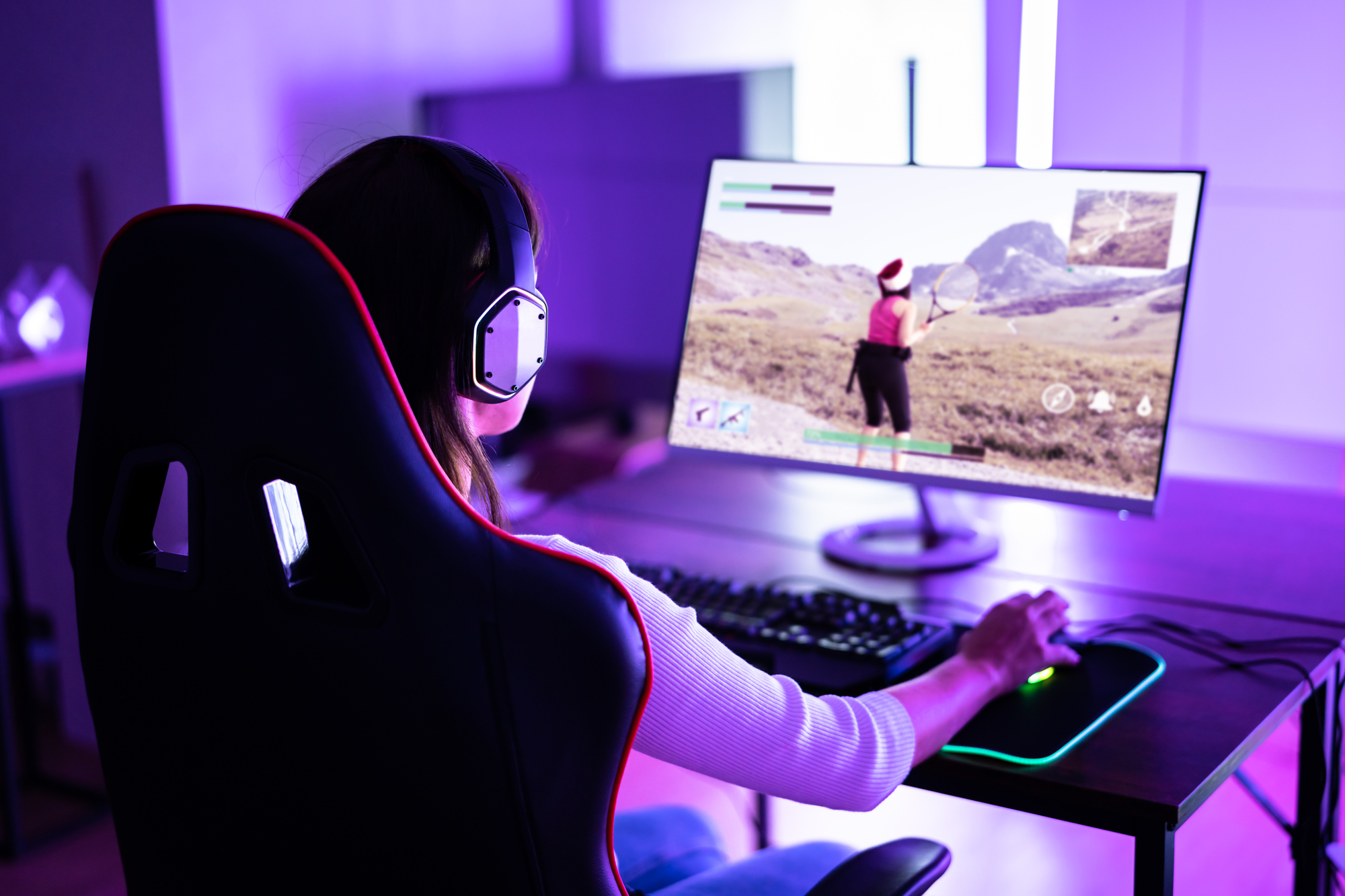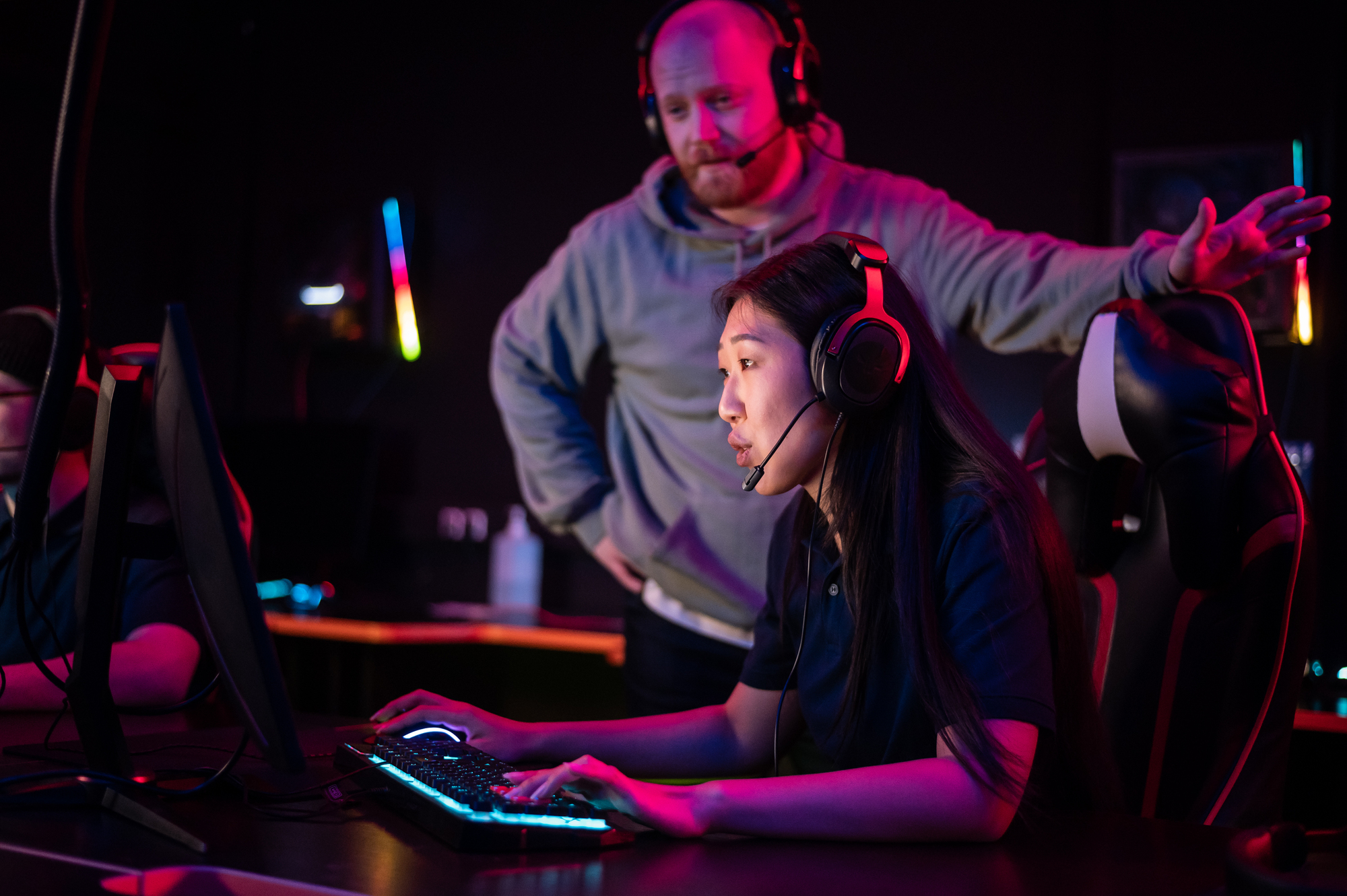Virtual reality and gaming have formed a powerful alliance, transforming the way players interact with digital worlds. VR technology immerses users in three-dimensional environments, allowing them to step inside their favorite games. This combination enhances the gaming experience by providing unparalleled levels of immersion and interactivity.
Virtual reality gaming offers a level of engagement that traditional gaming platforms cannot match. Players can look around freely, reach out to touch virtual objects, and feel as if they are physically present in the game world. This heightened sense of presence creates more intense and memorable gaming moments, from heart-pounding action sequences to awe-inspiring exploration of fantastical realms.
The marriage of VR and gaming opens up new possibilities for game design and storytelling. Developers can craft experiences that take full advantage of the 360-degree environment, creating games that are more intuitive and natural to play. As VR technology continues to advance, the line between virtual and physical realities in gaming will likely blur further, offering increasingly lifelike and captivating experiences for players.
Evolution of Virtual Reality in Gaming
Virtual reality has transformed gaming, introducing immersive experiences and new ways to interact with digital worlds. VR technology has progressed rapidly, reshaping how games are designed and played.
The Birth of VR Gaming
Early VR gaming experiments began in the 1990s with primitive headsets and limited graphics. The Virtuality arcade machines offered basic 3D environments, while Nintendo’s Virtual Boy attempted to bring VR to homes. These initial forays faced technical limitations and often caused motion sickness in users.
As processing power increased, more advanced VR prototypes emerged. In 2012, Oculus launched a Kickstarter campaign for the Rift headset, reigniting interest in VR gaming. This sparked a new wave of development from major tech companies and game studios.
Major Milestones and Innovations
The consumer release of high-quality VR headsets in 2016 marked a turning point. The Oculus Rift, HTC Vive, and PlayStation VR brought VR gaming to a wider audience. These devices offered improved resolution, tracking, and controls.
Game developers embraced VR, creating titles that took advantage of its strengths. Half-Life: Alyx showcased VR’s potential for immersive storytelling and interaction. Beat Saber became a breakout hit, demonstrating VR’s appeal for rhythm games and fitness applications.
Wireless headsets like the Oculus Quest removed the need for external sensors or powerful PCs, making VR more accessible. Eye-tracking and haptic feedback technologies continue to evolve, promising even more realistic VR experiences in the future.
The Impact of AI on VR Gaming
Artificial Intelligence (AI) is transforming Virtual Reality (VR) gaming, enhancing immersion and interactivity. AI technologies are revolutionizing gameplay mechanics, character behaviors, and player experiences in virtual worlds.
Machine Learning Algorithms
Machine Learning algorithms power adaptive gameplay in VR environments. These algorithms analyze player actions and adjust game elements in real-time. For example, difficulty levels automatically scale based on player performance. Enemy behaviors evolve as players progress, presenting new challenges.
AI-driven procedural generation creates vast, diverse VR worlds. Algorithms produce unique landscapes, quests, and storylines each playthrough. This increases replay value and keeps experiences fresh.
Graphics benefit from AI upscaling and optimization. Machine Learning enhances visual fidelity while maintaining smooth performance on VR headsets. This allows for more detailed and realistic virtual environments.
AI and NPC Behavior
AI significantly improves Non-Player Character (NPC) behaviors in VR games. NPCs exhibit more natural interactions and responsive dialogue. They remember past player actions and adjust their responses accordingly.
Advanced AI models enable NPCs to display emotional reactions and complex decision-making. This creates more believable and engaging virtual characters. Players can form deeper connections with AI-driven NPCs in immersive VR settings.
AI also enhances crowd simulations in virtual environments. Large groups of NPCs display realistic collective behaviors. This adds life and authenticity to virtual cities and social spaces in VR games.
Personalized Experience Through AI
AI tailors VR gaming experiences to individual players. It analyzes gameplay patterns, preferences, and physiological responses to customize content. This results in more engaging and relevant gameplay for each user.
Adaptive storytelling uses AI to modify narratives based on player choices. VR games can offer branching storylines that feel truly responsive to user decisions. AI ensures these narrative shifts remain coherent and meaningful.
AI-powered voice recognition allows for natural language interactions in VR. Players can communicate with virtual characters using their own voice. This enhances immersion and opens up new gameplay possibilities in virtual worlds.
Current State and Future Prospects
Virtual reality gaming continues to evolve rapidly, pushing boundaries in esports, hardware, and applications beyond entertainment. VR technology is transforming competitive gaming, advancing headset capabilities, and expanding into diverse fields.
The Role of VR in Modern Esports
VR has carved out a niche in the esports landscape. Games like Echo Arena and Beat Saber have gained traction as competitive VR titles. These games showcase unique physical challenges, blending digital skill with real-world movement.
VR esports events are growing in popularity. The VR League, sponsored by Oculus, features tournaments with substantial prize pools. This growth attracts more players and viewers to the VR gaming scene.
Broadcasters are exploring ways to make VR esports more engaging for spectators. Virtual camera systems allow viewers to experience matches from various angles, creating a more immersive viewing experience.
Emerging Technologies in VR Headsets
VR headset technology is advancing at a rapid pace. Higher resolution displays are becoming standard, with some devices offering 4K resolution per eye. This improved visual fidelity enhances immersion and reduces eye strain during extended gaming sessions.
Wireless capabilities are becoming more common in VR headsets. This freedom of movement allows for more natural gameplay without the restrictions of cables.
Eye-tracking technology is being integrated into newer headset models. This feature enables foveated rendering, which focuses processing power on where the user is looking, improving performance and visual quality.
Beyond Gaming: VR’s Versatility
While gaming remains a primary focus, VR is expanding into other sectors. Education institutions are using VR for immersive learning experiences, from virtual field trips to complex scientific simulations.
The healthcare industry is adopting VR for training medical professionals and treating patients. Surgeons can practice procedures in virtual environments, while patients use VR for pain management and therapy.
Businesses are leveraging VR for remote collaboration and product design. Virtual meeting spaces and 3D modeling tools are becoming valuable assets in various industries.
Challenges and Considerations for VR Game Development
Creating virtual reality games presents distinct hurdles for developers. Technical limitations, player comfort, and immersion all factor into the development process.
Optimizing for Different Hardware
VR game developers face the challenge of optimizing their games for various hardware configurations. Different headsets have varying specifications, including screen resolution, refresh rates, and field of view. This diversity requires developers to create flexible graphics settings and performance options.
Developers must also account for varying degrees of freedom in VR systems. Some setups allow for full room-scale movement, while others limit users to seated experiences. Adapting gameplay mechanics to work across these different scenarios is crucial.
Processing power remains a constraint in VR development. Rendering high-quality graphics at the frame rates needed for comfortable VR experiences (typically 90 Hz or higher) demands efficient coding and optimization techniques.
The Balancing Act: Immersion vs. Accessibility
Striking a balance between immersion and accessibility is a key challenge in VR game development. Highly immersive experiences can increase the risk of motion sickness for some players. Developers must carefully design movement systems and user interfaces to minimize discomfort.
Comfort settings and customization options help make VR games more accessible to a wider audience. These may include options for seated play, teleportation movement, or adjustable field of view settings.
Beta Testing and Player Feedback
Beta testing is critical in VR game development due to the unique nature of the medium. Developers need to gather extensive feedback on comfort, control schemes, and overall enjoyment.
Player behavior in VR can be unpredictable, as users have more freedom to interact with the virtual environment. Beta testing helps identify unexpected interactions or exploits that may need addressing.
Feedback on visual comfort is particularly important. Issues like judder, aliasing, or improper scale can cause discomfort in VR that may not be apparent when viewing the game on a standard monitor.
Developers must be prepared to iterate quickly based on beta feedback. This may involve adjusting gameplay mechanics, refining graphics, or implementing new comfort features to improve the overall VR experience.












